Proactive Classroom Management: Strategies That Prevent Problems and Boost Engagement
Build routines that keep students focused, calm, and ready to learn
Classroom management begins with proactive strategies that prevents problems before they happen. Some address broad challenges most teacher face, such as noisy arrivals, constant chatter, or students ignoring classroom rules. Others target specific issues like bullying, tardiness, or group work disruptions.
The reason they work so well is that they clearly outline the expected behavior or action, redirecting the students’ and teachers’ attention to the desired behavior. This approach not only eliminates unwanted behavior but also replaces it with the behavior you want to see. By keeping your attention on students who are “doing it right,” you strengthen positive habits and build a classroom culture grounded in success.
From a neuroscience perspective, focusing attention on what is going well activates the brain’s reward system. This releases dopamine, which boosts motivation and makes it more likely students will repeat the desired behavior.
Without proactive strategies, your day is spent in reaction mode, putting out fires, repeating directions, and trying to regain focus after every disruption. It is exhausting and leaves little room for connection or high-quality instruction. Proactive strategies put you back in control. They create predictable routines and classroom habits where students know what to do, feel supported, and stay engaged. Research shows that classrooms using proactive strategies see higher engagement, fewer disruptions, and improved teacher wellbeing.
What Are Proactive Strategies
Teaching is complex, with many moving parts happening at the same time. Proactive are the strategies taught to prevent disruptions. They help you streamline those parts like a skilled choreographer, combining individual actions into a smooth, cohesive flow.
There are general proactive strategies, like how students enter the classroom and what they do before the lesson begins. There are also targeted proactive strategies designed for your specific challenges. To determine which proactive strategies would benefit you most, identify your classroom trouble spots, such as:
Difficulty getting everyone’s attention at once
Disruptions during group work
Students settling down after recess or transitions
Persistent off-task talking
Once identified, create routines and practices that directly address the issue. Teach them explicitly by explaining their purpose, modeling exactly what you expect, and then having students practice, receive feedback, and try again. This process ensures that your focus remains on the behaviors you want to shape, not the ones you want to stop.
When you model and practice a strategy, you are literally helping students’ brains strengthen the neural pathways connected to that behavior. Repetition plus feedback shifts the action from a conscious effort into an automatic habit stored in the brain’s procedural memory system.
Learn more about how to make your classroom management plan work reading, Rules That Stick: The Brain-Based Way to End Repeat Reminders.
For proven proactive strategies that we used in our classes and know they work, explore the CoreTex Library. Look for strategies that address opening routines, attention signals, and transition cues.
Why Proactive Strategies Matter
With proactive strategies, expectations are clear, students feel secure, and learning flows without constant interruptions. Those calm, well-run classrooms where teachers rarely raise their voice and students seem to move in sync are not the result of luck. They are the product of intentionally and explicitly teaching proactive strategies that prevent most disruptions before they start, protecting your focus, energy, and relationships with students.
Use the chart below as a conversation starter with your class. Explain how each quality supports learning and behavior, and how you will work together to build a classroom culture that values engagement, happiness, and self-regulation.
📊 What the Research Shows
Proactive strategies are a win-win for students and teachers. They foster engagement, self-regulation, and strong relationships while reducing conflict, stress, and withdrawal. See the Research Highlights at the end for titles to link.
Consistent proactive routines help stabilize the brain’s limbic system, which governs emotional responses. When students know what to expect, their stress response decreases, allowing the prefrontal cortex, the center for focus, problem solving, and self-control take the lead.
Below are two proactive strategies that build attention, ownership, and calm through self-awareness and self-regulation, that we used in our classrooms. Each one connects naturally to the BrainZones Model so students learn when and how to shift their mental state and focus.
🔷 Strategy 1: Square Up and Zero In
There are moments when you need every student’s full attention and you are tired of repeating yourself. You say turn around, but they only half turn. You say eyes up here, but a few are still shuffling papers. Or as soon as you finish directions, someone asks, “What page?” 🙄
Teach the proactive routine Square Up and Zero In from the CoreTex Library. When you call it, students stop, align fully forward, and give you their eyes.
What It Looks Like
Explain and model the position. Sit tall with eyes, shoulders, hips, knees, and feet facing forward.
Practice until the class can lock in quickly.
Let students experience it with energy first. Start with chatter and movement in the Green Zone. Then call Square Up and Zero In and celebrate the fast reset.
Build momentum. Call out wins. Row two is Square. Row four is Square. The whole class locked in under thirty seconds. Who can beat that?
Aligning the body toward the teacher signals to the brain that focus is required. The physical reset interrupts competing attention and helps students shift into a learning ready state in the Yellow Zone (Mathews and Cohen, 2022).
🌟 Teacher Tip
Use behavior-specific praise to get stragglers on board. Start with individual recognition, then groups, then whole-class recognition.
🔷 Strategy 2: Chill Mode
Chill Mode gives students a personal reset when pressure rises. Thoughts race. Stomachs tighten. Focus slips. Your goal is to help students shift into the Yellow Zone, or have them access their Blue Zone to achieve a calm and present state.
Chill Mode – Student Self-Regulation Reset
What It Looks Like in Action
Model your own power up. Sit calmly, take a slow breath, and narrate your reset.
“When I feel tense, I picture a steady light settling over me. I tell myself, I got this, then I breathe until I feel collected.”Invite students to design a personal power up and practice quietly.
Schedule short daily reps at the start of class, before tough tasks, or after a challenge.
Why It Works
When emotions spike in the Orange Zone, stress hormones make prefrontal control harder. Chill Mode pairs a slow breath with a simple image or phrase. A deep breath calms the nervous system while focused attention anchors the mind (Klingbeil et al., 2017, Jerath et al., 2015, Brackett et al., 2019). Chill Mode interrupts the stress response by engaging both the body and the mind.
🌟 Teacher Tip
Practice under mild stress so the routine sticks. Have students check a resting pulse, do quick movement, then apply Chill Mode and recheck. The fast drop shows the strategy works.
🔁 Proactive Strategy Wrap up Review
The Benefits of proactive strategies:
Proactive strategies promote positive behaviors and reduce disruptions
Small issues are less likely to escalate and students build resilience.
Stress drops for you and for students which creates a calmer room.
Trust grows because students feel prepared and supported.
A prepared mindset boosts confidence when challenges appear.
“An ounce of prevention is worth a pound of cure.” Benjamin Franklin
Thanks for reading
Debbie @brainzones.org
Explore additional posts in our Classroom Management Series:
📚 Research Highlights
Hirsch & McNeil (2021): Predictable, practiced signals help students shift from high-arousal to focused states by providing clarity and structure.
Nguyen & Grant (2023): Teacher cues paired with consistent modeling improve compliance and reduce transition time.
Jennings & Greenberg (2019): Calm teacher presence and clear routines support co-regulation and improve classroom climate.
Klingbeil et al. (2017): Brief mindfulness practices paired with gestures help students regulate arousal and improve focus.
Brackett et al. (2019): Teaching students to identify and manage emotions improves behavior, engagement, and relationships.
Zinsser et al. (2020): Self-regulation practices enhance executive functioning and help maintain focus during stress.
Follow Instagram @BrainZones for quick strategy clips and new additions to the library.



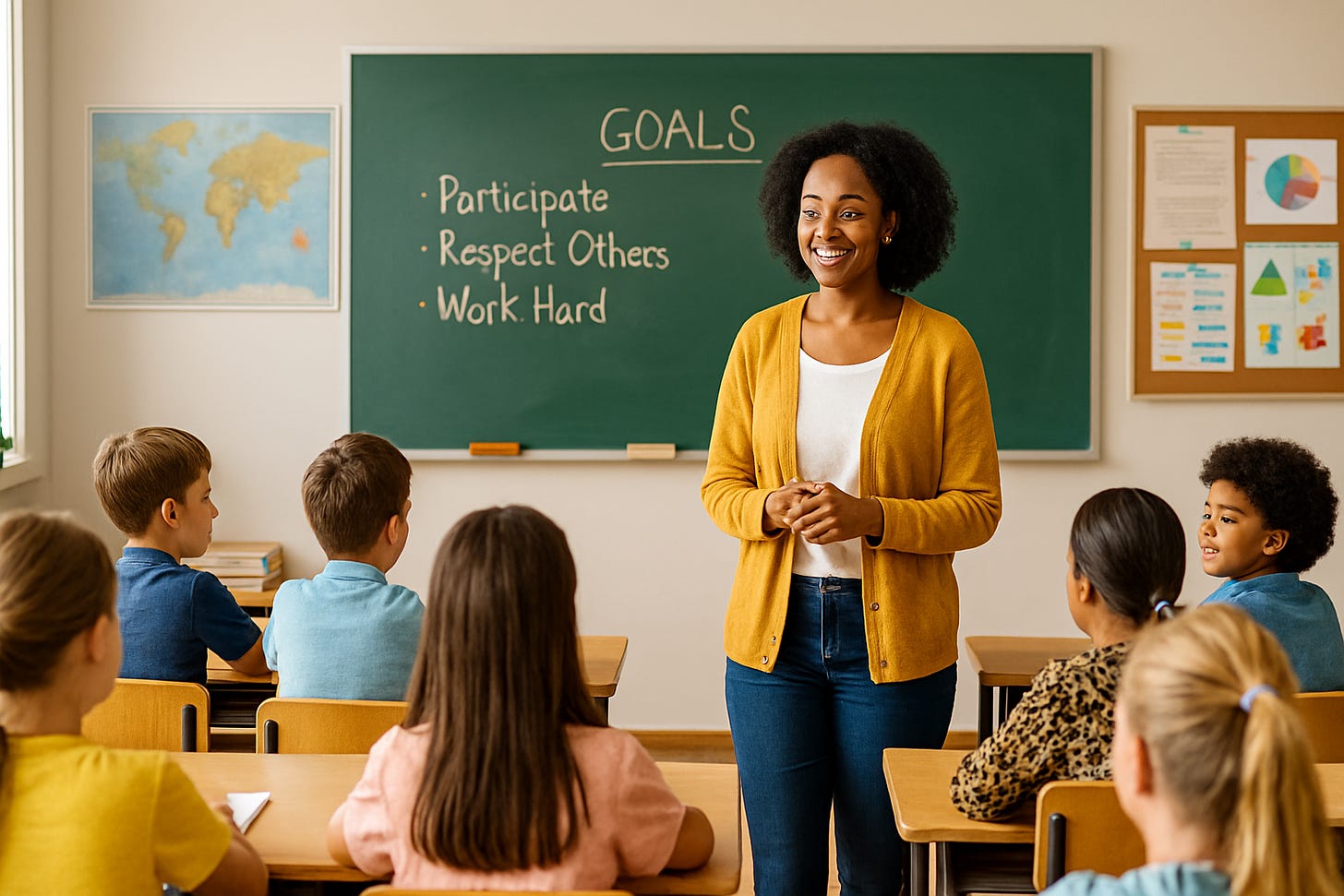
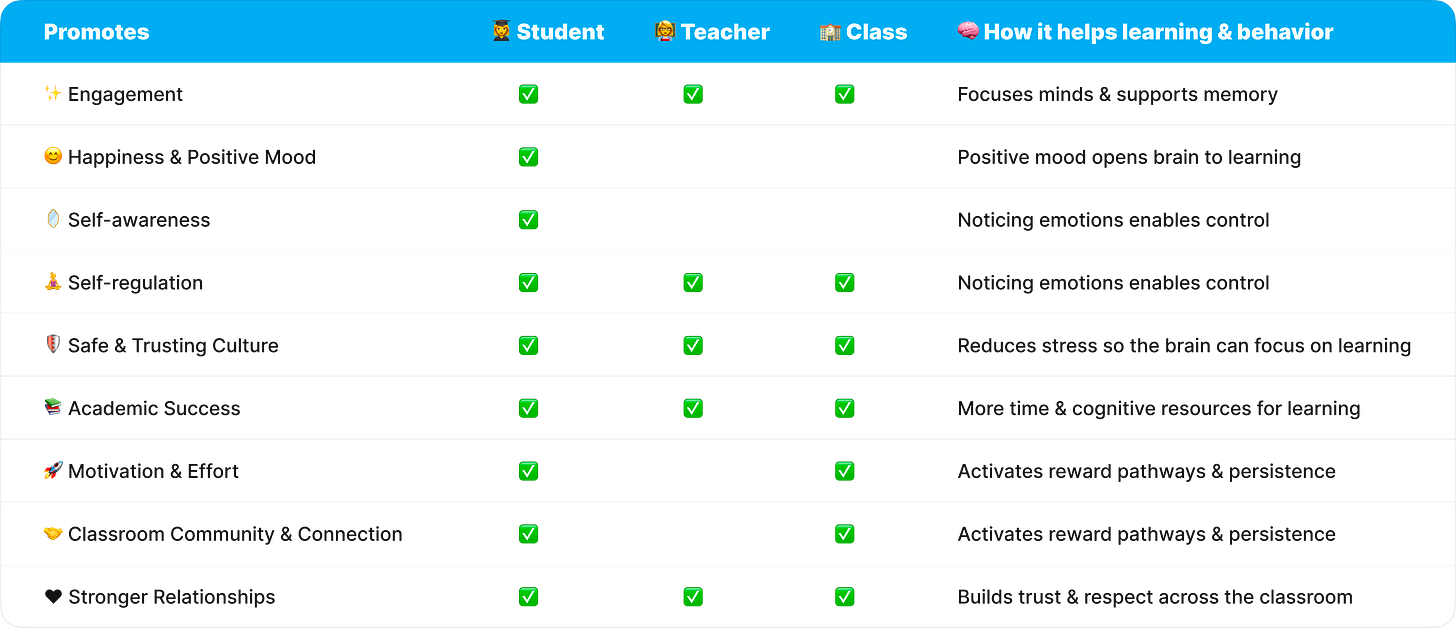

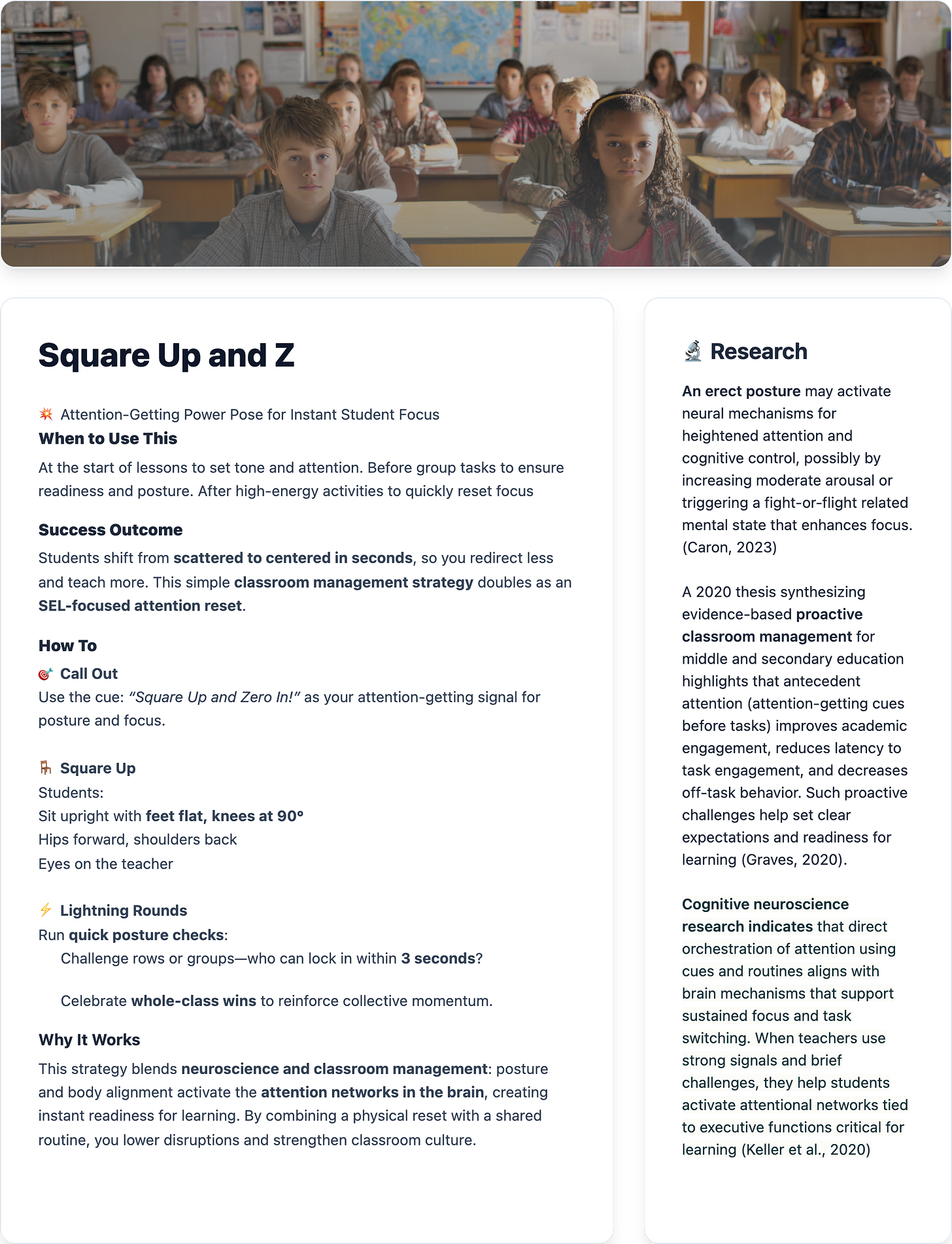
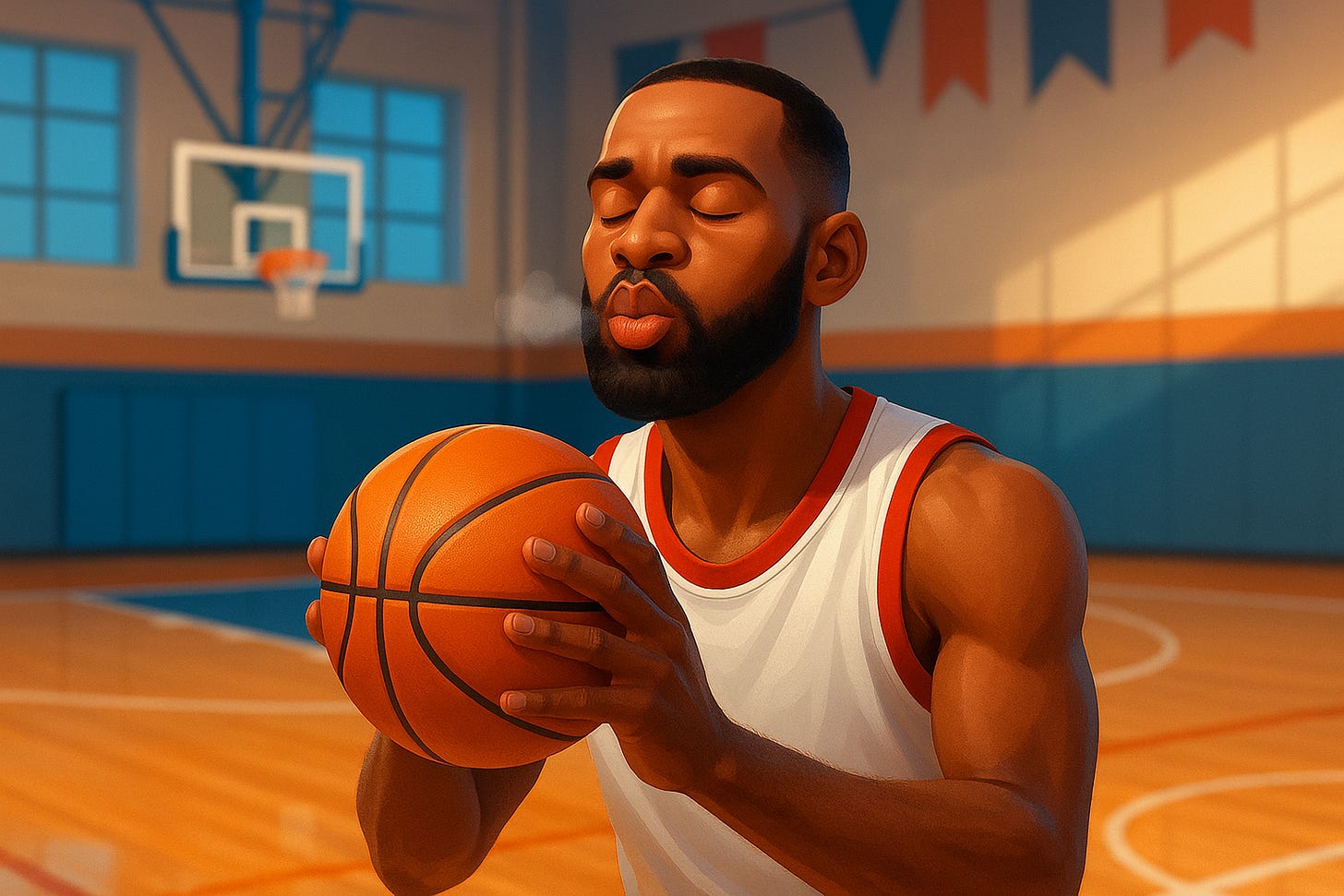
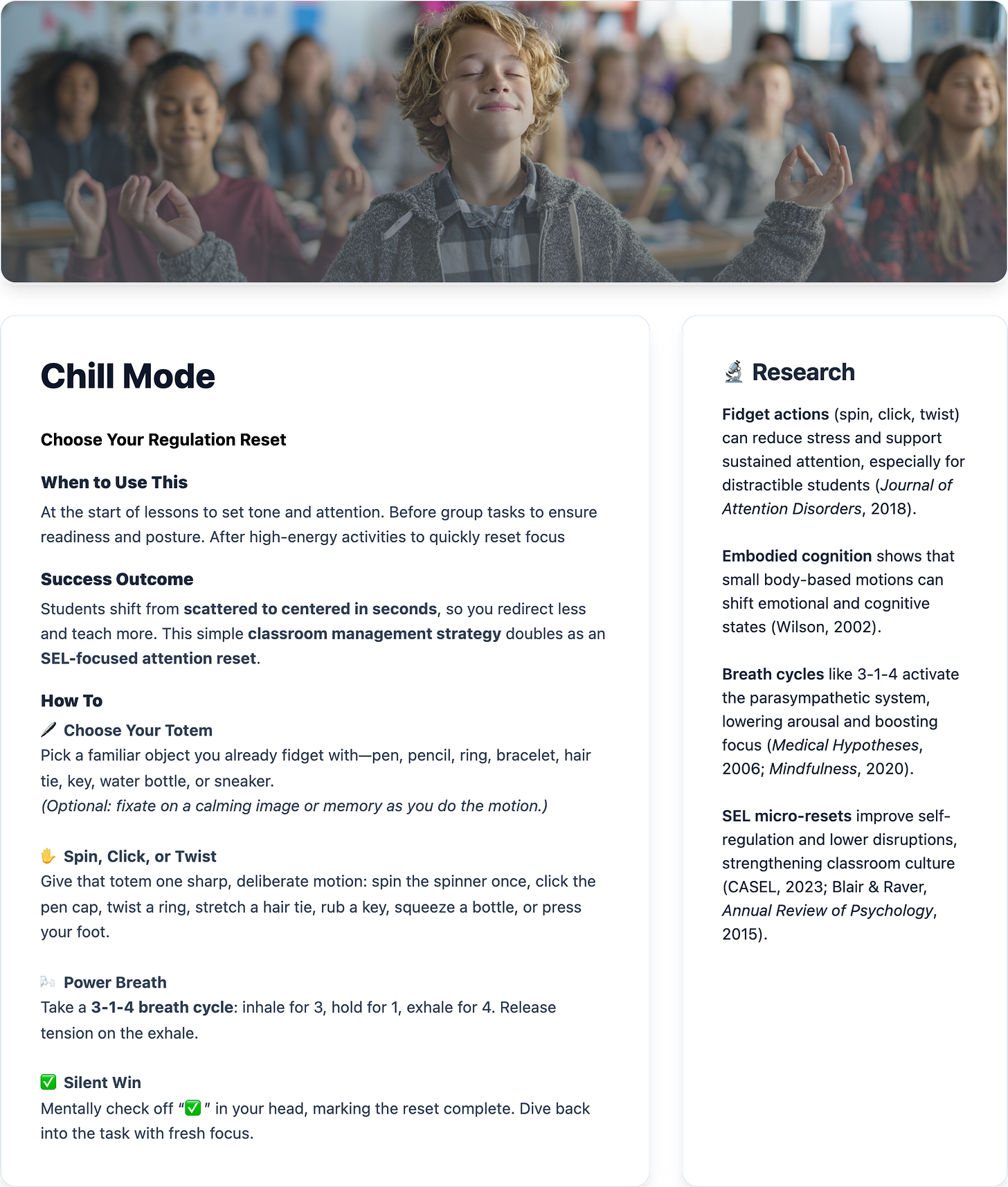

These are brilliant!